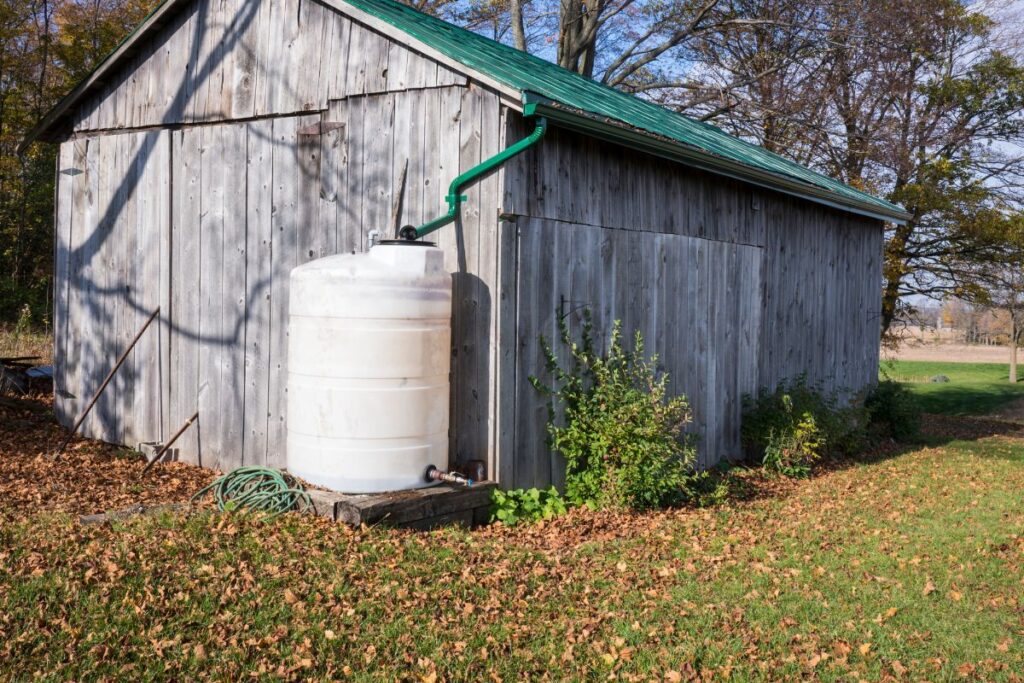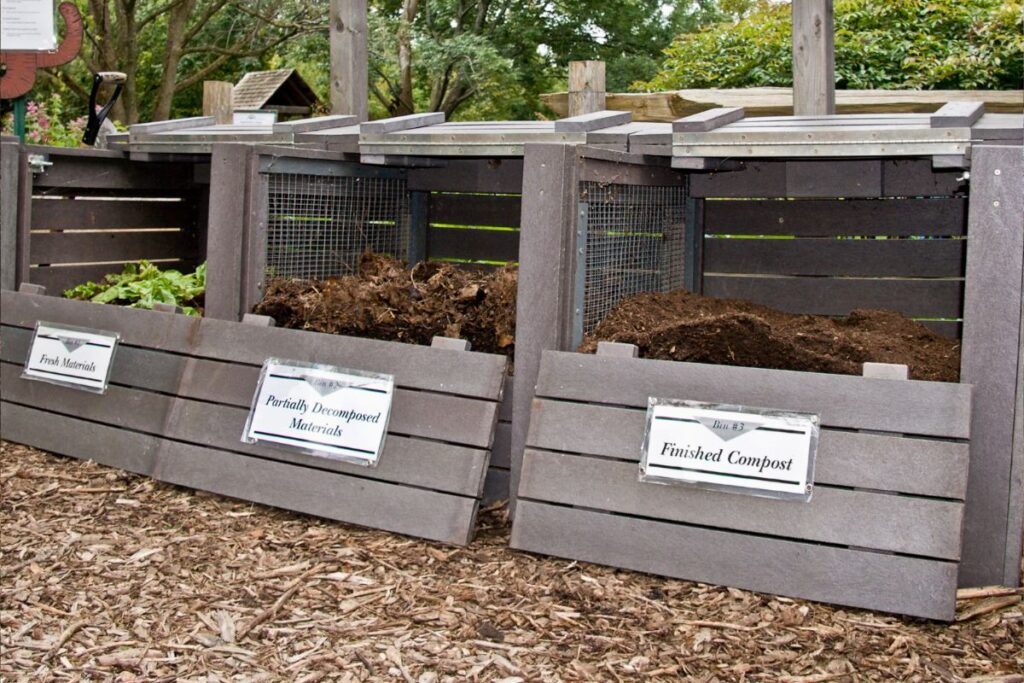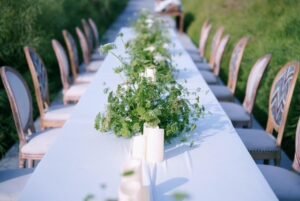Table of Contents
Changing how an outdoor space looks using eco-friendly design principles can make it more beautiful and sustainable. Think about a garden lush with vibrant native plants that are well suited for the area’s climate, thus reducing water usage and maintenance.
Consider a seamless system for harvesting rainwater, which traps every drop for your plants during dry spells. Imagine an area where people composted kitchen scraps and garden waste to create nutrient-rich soil essential for healthy fruit and vegetables while reducing landfill waste.
How about recycled materials, including composite cladding and reclaimed wood? People can use such materials to make attractive garden furniture and structures, each telling a story of creativity and resourcefulness.
Lastly, imagine energy-saving bulbs lighting up pathways and seating areas. This will enhance security and save energy. These design ideas combine aesthetics with environmental consciousness by turning your outdoor space into a practical yet picturesque green haven.
Utilize Native Plants for a Sustainable Garden
Understanding the Advantages of Native Plants
Local plants have evolved in specific areas to survive in particular climates and soils. When planted in a sustainable garden, such plants offer many ecological advantages. One significant benefit is reducing water use. Unlike non-native species, which require more supplementary watering because they do not acclimatize to local weather patterns, native plants rely on the region’s natural rainfall fluctuations; therefore, you need less supplemental irrigation, especially if you live in drought-prone areas.
In addition, indigenous flora generally has lower maintenance requirements than other alternatives. These plant varieties have developed natural resistance mechanisms against pests within their habitat, thus limiting reliance on chemicals like insecticides or fertilizers that could harm ecosystems around them, too. Moreover, since these native species enhance biodiversity by creating healthier surroundings, they also facilitate the development of crucial feeding grounds. They are home to indigenous fauna, e.g., pollinators (bees and butterflies), birds, and small mammals.
Use of Native Plants in Your Design
When incorporating native plants into your garden design, conducting in-depth research on what grows naturally in your area is necessary. Numerous valuable sources, such as local nurseries, arboretums, and extension services, can help you find the best plant selections. A mix of perennials, shrubs, and trees creates an exciting landscape. This will make your garden visually pleasing throughout the year and provide ecological benefits.
For instance, monarch butterflies love milkweed because of its life cycle stage, which is excellent for attracting them. Echinacea purpurea produces plenty of nectar, which makes it ideal for supporting bee populations. While oaks possess huge canopies and acorns, they also provide habitats for different types of birds and other wildlife species. By carefully integrating such native plants, however, a garden could become a sustainable sanctuary that promotes environmental equilibrium and natural beauty.
Install a Rainwater-Harvesting Systems
Advantages of Harvesting Rainwater
Rainwater harvesting involves collecting and storing water for later use, providing several sustainable advantages, including water conservation. Capturing rainwater significantly reduces reliance on municipal waters, thus saving this resource considerably. This method is beneficial, especially when there is a water shortage or drought in regions.
Additionally, rainwater harvesting can be economical. It is possible to use stored rainwater for irrigation and consequently save on water costs when you maintain your garden green. This benefits plants because tap water invariably contains elements, such as chlorine and fluoride, which rainwater does not include due to its purity. This will enhance plant quality by making them grow healthier and mitigate the soil’s chemical buildup risk.
Setting Up a Rainwater Harvesting System

An effective rainwater collection system must include several key components. This begins with a collection surface, usually the roof of your home or shed. When it rains, gutters collect water from this surface. Then, the system connects the gutters to downspouts or diverters, which channel the water into storage tanks or barrels.
Selecting appropriate storage tanks is crucial for meeting the garden’s needs. Options range from small barrels for modest gardens to large underground cisterns for extensive landscapes. The choice depends on the water volume required and available storage space.
An essential element of rainwater harvesting is ensuring the collected rainwater is clean enough for garden use. For this purpose, filters must be in place to help remove debris, including leaves, alongside other impurities from the gathered water. Basic filtration systems can purify the water efficiently, making it fit for gardening. However, more complex facilities should incorporate additional stages of purification so that they produce the cleanest water.
Including rainwater harvesting in garden design enables sustainable use of available water resources, better plant growth, cost minimization, and reduced operational expenses across the board, promoting sustainability. This method provides a practical and eco-friendly way of managing water resources to ensure lively gardens even if no external source supplies river waters.
Create a Composting Area
The Environmental Impact of Composting
Compost is also essential in sustainable waste management and improvement since it converts organic waste into nutrient-rich soil. It also helps to reduce the volume of waste that goes into landfills, which results in methane gas emissions, one of the leading causes of global warming. The practice further improves soil structure, aeration, and water retention capacity, thus making it more fertile and resilient.
Moreover, compost is a natural fertilizer that provides essential plant nutrients such as nitrogen, phosphorous, and potassium. Gardeners should use fewer chemical fertilizers to avoid damaging the soils or other surrounding environments and instead use compost material to encourage healthy plant growth.
Steps to Start Composting

You should start this process by marking out the area you will use for composting on your plot. You should select an ideal part inside your garden that is easy to reach and well-drained. This will ensure you are comfortable with its location while preventing waterlogging from hindering decomposition processes.
Next, construct a bin for your compost heap. You can purchase a bin or create one using wooden pallets or chicken wire mesh netting, among other materials available at home. It must have a sound circulation system and drainage facilities throughout to allow fresh air inside it to help decompose.
You add green materials such as kitchen leftovers, coffee grounds, grass clippings, and brown ones like leaves, straw, and cardboard.
For best results, turn the heap regularly to allow some air into it, speeding up decomposition activity there. You’ll know it’s reached optimal moisture levels when it’s moist to the touch, like squeezing water from a wet sponge. This is the optimum moisture level for the highest activity of microorganisms inside it.
You can improve gardening by creating a composting area that recycles organic waste to enrich the soil, which is one way towards more sustainable gardening. By doing this, gardeners will contribute to the overall health of plants and environmental stewardship.
Use Recycled and Sustainable Materials
Benefits of Recycled and Sustainable Materials
Utilizing recycled materials for outdoor spaces makes them unique while lessening the environmental impact. One significant advantage is conserving resources. Using recycled materials decreases demand for new raw materials, thereby protecting natural resources and reducing the strain on extraction and processing. In addition, it helps minimize waste by reusing items rather than sending them to landfills, where they could have been idle forever. This activity reduces waste and supports a circular economy.
Another considerable advantage is reduced energy usage. Making recycled products saves less energy than manufacturing new ones, which lowers carbon emissions and emits fewer greenhouse gases into the atmosphere. Energy efficiency is crucial in curbing climate change; recycled materials are among the best options for environmentally friendly gardeners.
Ideas for Using Recycled Materials
Various creative ways exist to use environmentally sustainable or recyclable items to add value and beauty to outdoor spaces. For example, you can reuse old wood as excellent decking furniture or even tough and aged garden beds, giving your space an appealing character.
Recycled metal can provide modern-looking garden sculptures, fences, or containers that enable one to enjoy privacy while caring for nature. Recycled paving stones made from eco-friendly materials help deal with rainwater runoff. Otherwise known as porous pavers, these pavers allow water through them, thus enhancing sustainability by avoiding stormwater runoff.
Another possibility is upcycling furniture made from recycled material, such as doors turned into tables and wooden pallets converted to surprisingly comfortable garden seating. By doing this, individuals can save money, reduce waste, and give a new purpose to old items.
By imaginatively combining recycled and sustainable materials in their garden designs, gardeners can create beautiful outdoor spaces that are environmentally friendly and reflect their style and green commitments. This implies that gardens must be attractive while contributing positively to the planet.
Implement Energy-Efficient Lighting
The Importance of Energy-Efficient Lighting
However, traditional lighting sources consume much energy despite the need for adequate outdoor lighting due to safety issues. Energy-efficient light solutions such as LEDs or solar lights can help your gardening reduce its carbon footprint. Several advantages are associated with this, including lower energy consumption rates from LED lights and solar lamps, which use up to 80% less energy than conventional bulbs. Reduced power bills mean lower energy usage and environmental conservation efforts at large.
Another considerable advantage is saving costs. Energy-efficient lighting solutions last longer than regular lighting, thus resulting in low operating expenses. Such fixtures require fewer replacements over time, reducing maintenance costs in the long run. Additionally, they can be designed not to pollute the night sky unduly, thereby preserving the natural nocturnal environment in favor of human health and wildlife.
Choosing and Installing Energy-Efficient Lights
You can follow several practical steps to implement energy-efficient lighting effectively. As a result, solar lights have become quite popular among homeowners who wish to put up outdoor installations like pathways through flower beds or accent lighting around fountains. Solar panels generate power without needing an external electricity source, which makes them cost-effective due to minimal installation requirements compared to other forms of electricity.
LED bulbs are another great option. Changing traditional bulbs with these can save lots of watts and last longer. Putting up motion sensor lights at appropriate places like driveways and entrances will lead to illumination only when necessary, thus further conserving energy. The sensors pick on movements that make people turn on the lights themselves, enhancing security and minimizing wasteful use of power.
Investing in intelligent lighting systems can provide additional convenience and efficacy. This means one can manipulate such systems remotely using their phone or simply timing them, enabling precise lighting based on specific routines and demands. The concept flexibly supports garden illumination besides optimizing energy consumption to the user’s benefit.
With these energy-saving lighting solutions, your backyard will look nicely illuminated and good for the planet. This step appeals to the garden and functionality, leading to sustainable living practices.
By adopting these green ideas, we transform our outdoor spaces into eco-friendly havens that benefit nature and us. There are no artificial gardens here. Sustainability and beauty incorporate ideas like indigenous plants, rain harvesting systems, composting pit spots, recycled goods usage, and employing less-consuming illuminations. Let’s adopt these changes so our external environments accurately reflect our eco-friendly lifestyle that we can appreciate forever.









